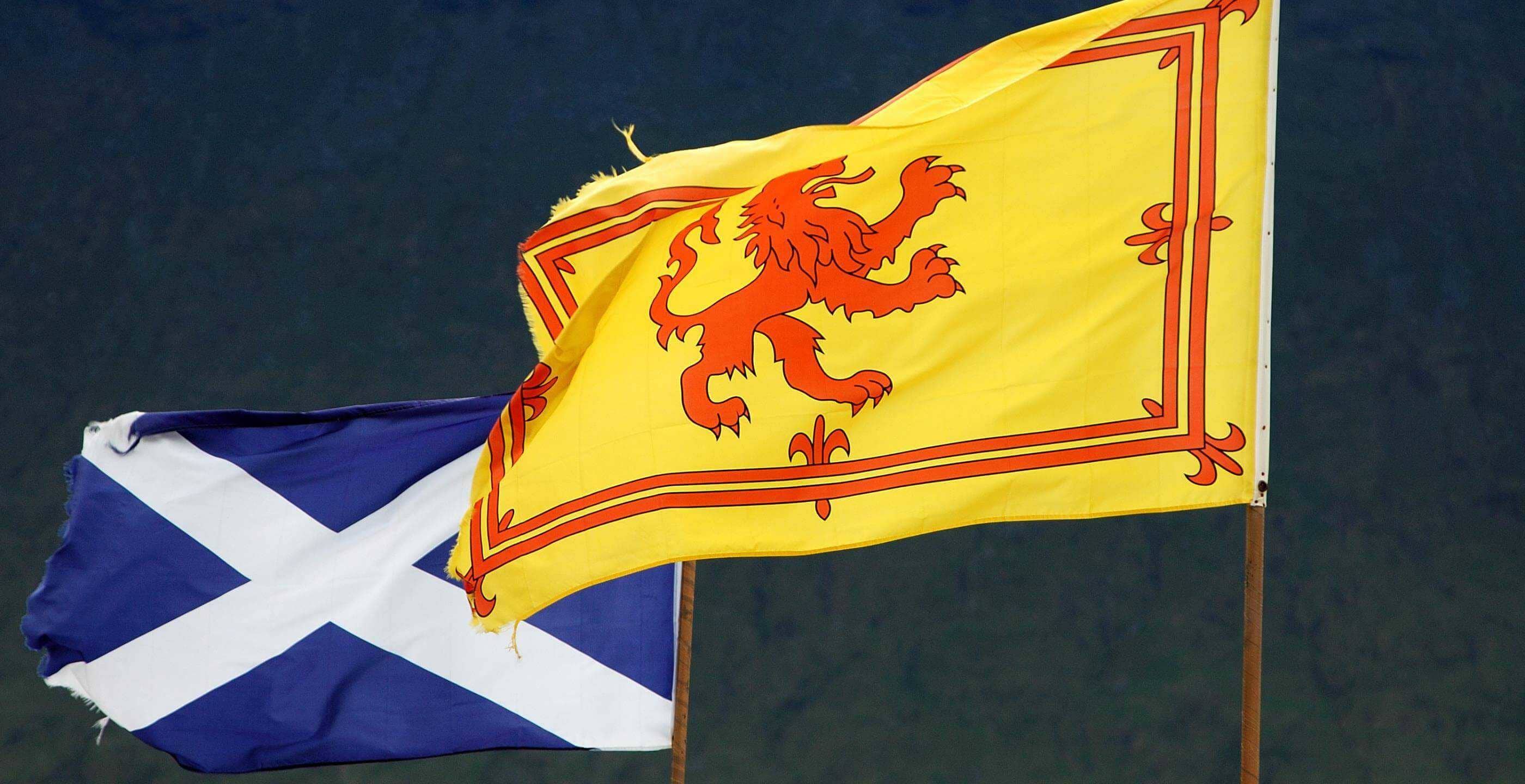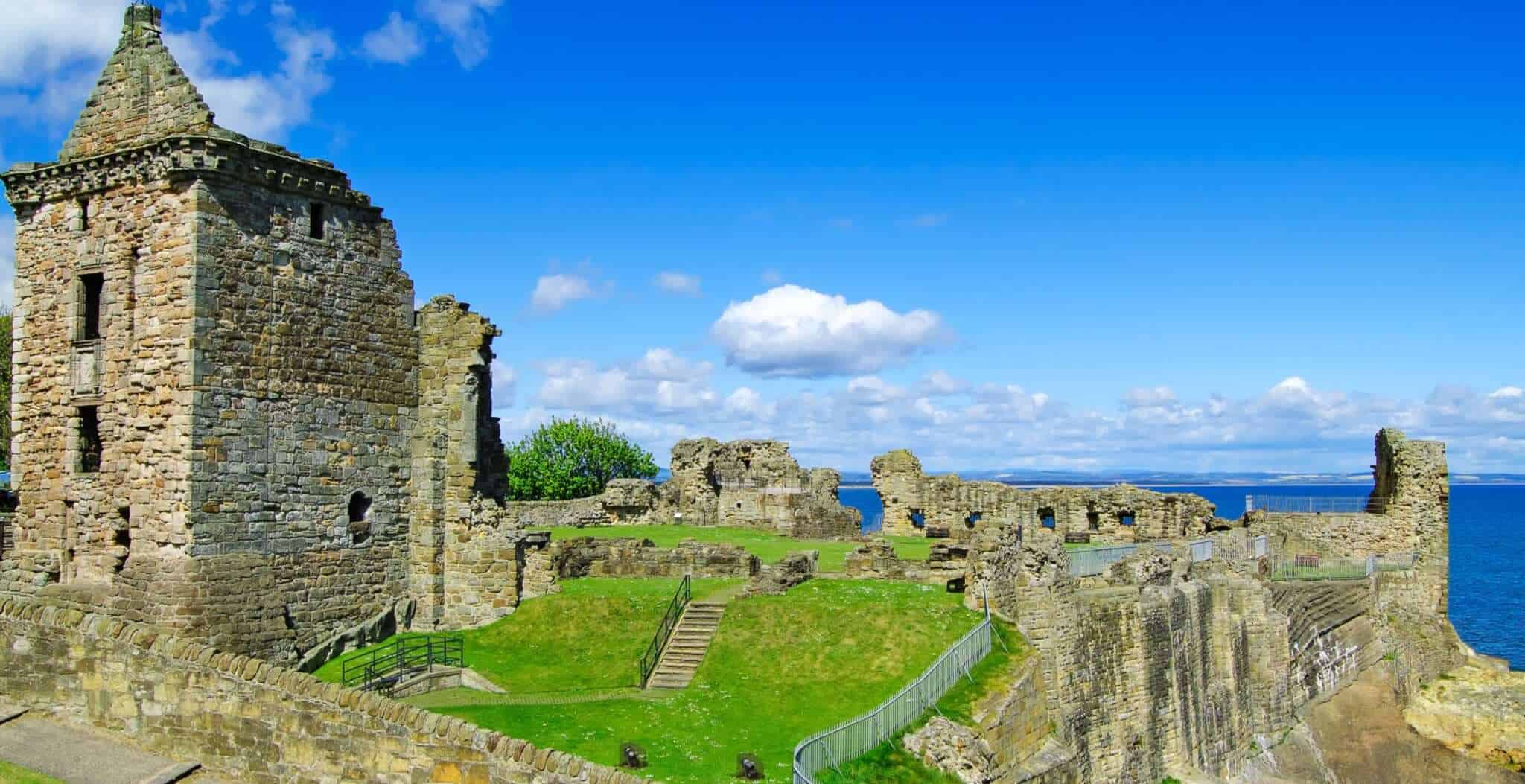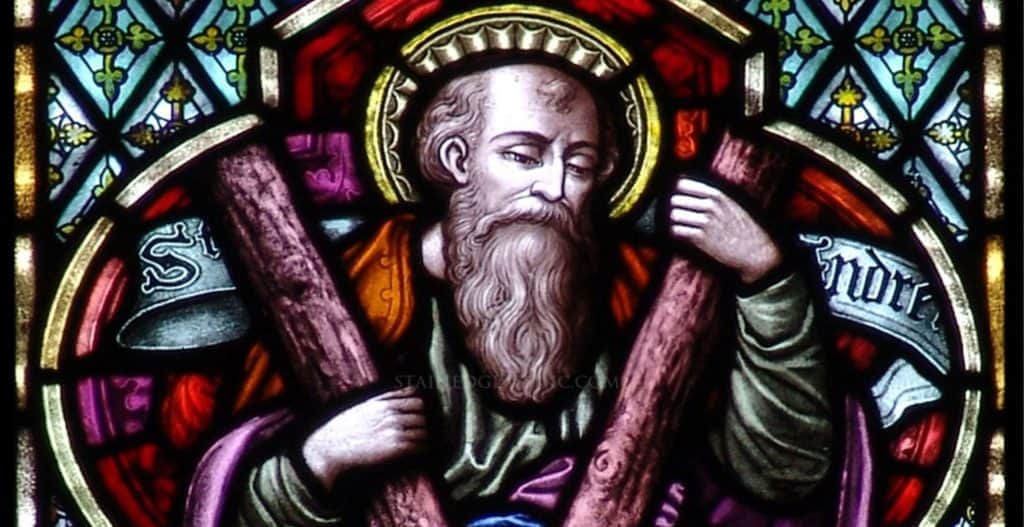When Saint Andrew, one of the Apostles, was being crucified by the Romans in A.D. 60, it is said that he believed himself unworthy to be crucified on a cross like that of Christ, and so he met his end on a ‘saltire’, or X-shaped cross (St. Andrew’s cross) which became his symbol.
Two separate legends help to explain the association between Saint Andrew and Scotland. One story tells how in A.D. 345 Saint Regulus was instructed by an angel to take some relics (bones) of Saint Andrew to a far-off land. He eventually arrived in Fife on the northeast coast of Scotland, where he founded the settlement of St. Andrews. Yet another version recalls how in the 7th century, Saint Wilfrid brought the saint’s relics home with him following a pilgrimage to Rome. The Pictish king, Angus MacFergus, subsequently had them installed at his new monastery of Saint Regulus at Kilrymont, later renamed St. Andrews.
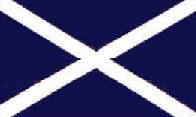
And still yet another legend links the adoption of Saint Andrew’s cross as Scotland’s national flag. This recalls how, in 832, on the eve of a battle between a combined Picts and Scots army and an invading army of Angles led by King Aethelstan of East Anglia, Saint Andrew appeared to the Pictish king, Óengus II (Angus) and assured him of victory. The following morning a formation of clouds gathered against the backdrop of a clear blue sky, depicting a white saltire that was visible to both sides. The omen inspired the Picts and Scots to win a famous victory over the Angles of King Aethelstan and so the white cross on the blue background was adopted as the national flag of Scotland.
Following Robert Bruce’s victory at the Battle of Bannockburn in 1314, the Declaration of Arbroath officially named Saint Andrew as the patron saint of Scotland. The saltire appears to have become the official national flag in 1385 when the Parliament of Scotland agreed that Scottish soldiers should wear the white cross as a distinguishing mark. In such times flags and banners were important to identify opposing forces in heat of battle.
Whilst its exact origin may have been lost in myth and legend, the flag of Scotland is generally regarded as one of the oldest national flags still in modern use.
Not content with one flag however, Scotland also has a second unofficial national flag. This one generally appears by the thousands wherever and whenever the national sporting teams are competing and is commonly known as the Lion Rampant. The flag is actually the Royal Standard of the King or Queen of Scots and it remains the personal banner of the monarch; as such its use is, strictly speaking, restricted.
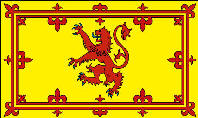
It is thought that it was King Richard I of England “the Lion-Heart” late in the 12th century who first introduced a heraldic device showing a rampant lion, the king of beasts, rearing up with three of its clawed paws out-stretched as if in battle. This Lion Rampant was eventually adopted as the Scottish royal coat of arms and incorporated into the Great Seal of Scotland.
